The cave temples in Tamil Nadu are among the most wonderful examples of ancient Indian rock-cut architecture as they combine art and spirituality with the culture of the day. Every year millions come to this part of the world to witness its ancient civilization stamped forever in its beautiful cave temples. The caves and shrines belong to the period of the late Pallava and the early Pandya rule (VI-IX centuries) and were carved out of rocks. These temples are decorated with fine carvings and primarily depict scenes from Hindu mythologies centered around important deities like Shiva, Vishnu, Durga, and others.
10 Cave Temples In Tamil Nadu
Here are ten magnificent cave temples in Tamil Nadu you should visit.
1. Mahabalipuram Cave Temple

Photo: Manishmjoshi / Wikimedia Commons
Mahabalipuram (or Mamallapuram), is a recognized site on the UNESCO World Heritage List. These rock-cut temples, belonging to the 7th century, were commissioned by the Pallava rulers and offer a glimpse of the talented craftsmanship of ancient Dravidian architecture. Naturally, these temples owe their artistry to sculptors who painstakingly expressed the beliefs of Hinduism and other deities’ stories in statues and picture ornaments. Apart from these caves, the complex also offers hall shrines or mandapas and paintings in relief like that of Arjuna’s Penance that are both artistic and of spiritual importance
Timings: 8 AM – 6 PM
Best Time To Visit: November – February
Nearest Airport: Chennai Airport
Suggested Read: Sarabeswarar Temples In Chennai For A Blissful And Spiritual Experience
2. Mandagapattu Cave Temple
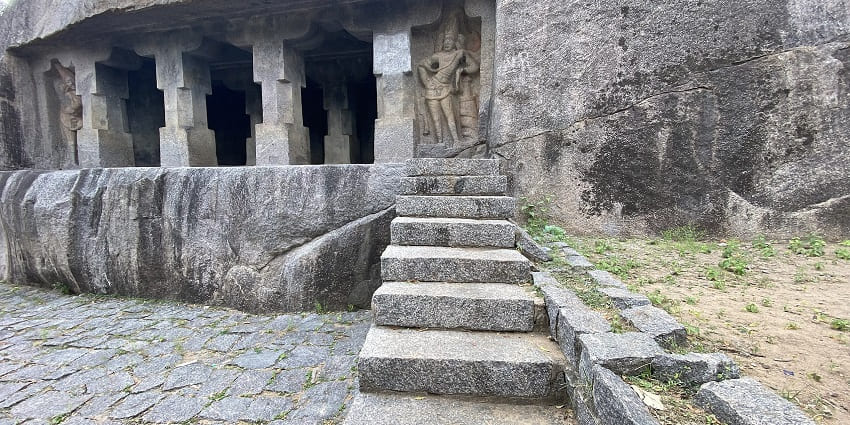
Photo: D Neethidoss / Wikimedia Commons
Mandagapattu is yet another wonder made by the Pallava dynasty. The north-facing cave shrine comprises two pillars and two pilasters at the front facade creating three bays standing, 22 feet in length, 24 feet in width, and 9 feet in height. The temple contained an important inscription stating that the ancient stone was all built without a single tree or brick or mortar, which was the pride of King Mahendravarman I. This innovative approach later became the hallmark of Pallava temple architecture.
Timings: NIL
Location: Vilupuram District
Nearest Airport: Vilupuram Airport
3. Pillayarpatti Cave Temple
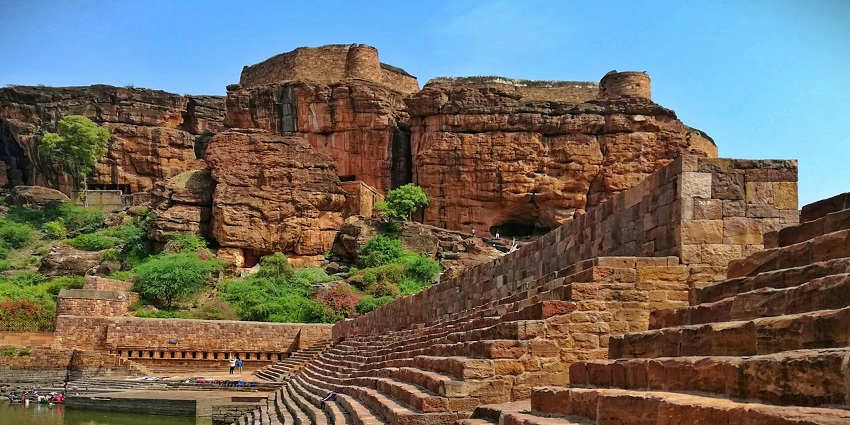
Photo: Abhimanyu Shivkumar / Unsplash / Image For Representation Only
This place is called Vinayaka in Tamil as well. He is depicted with two arms, a trunk turned to his right side, and a height of 6 feet. The Pillayarpatti Cave Temple is also a bastion of early rock-cut architecture that is common in Tamil Nadu apart from being a religious center. The temple also has ancient inscriptions and sculptures indicating the patronage of the temple by the Pandyas, and how their artistic and devotional work was carried out in the shrine. It continues to be an important place of worship for the followers of Lord Ganesha, and Lord Shiva.
Timings: 6 AM – 1 PM and 4 PM – 8:30 PM
Location: Pillayarpatti village
Nearest Airport: Madurai Airport
Suggested Read: Best Places To Visit In Kanchipuram For An Unforgettable Experience
4. Tiruchirappalli
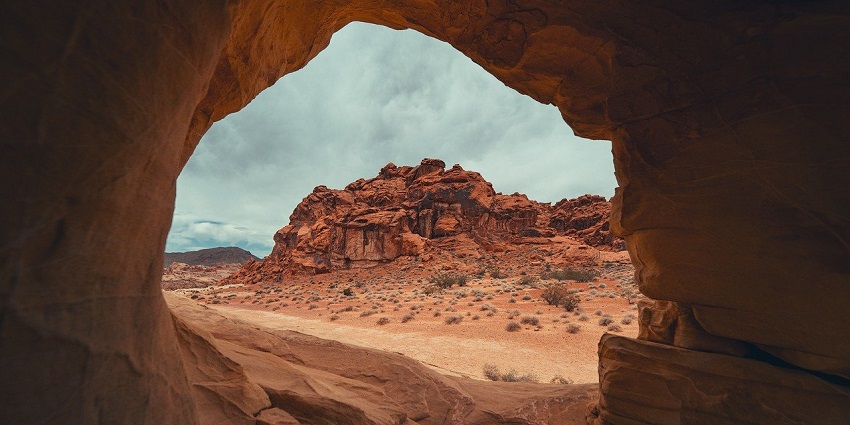
Photo: Lenzatic / Pixabay / Image For Representation Only
Cave Temple marks the 6th of the series of Tevara Stalams found within the Chola dominion. The underground temples of Thiruchirapalli are also among the well-known cave temples in Tamilnadu. This area is of great historical importance, with its temples included in the verses of Tevaram, which are ancient Tamil songs devoted to Shiva. The pilgrims visit these temples irrespective of seasons but maximum rush is witnessed during festivals like Vinayaka Chaturthi and Shivaratri. Apart from their spirituality, these temples attract tourists as they are fascinating and have great historical value.
Timings: 6 AM – 8 PM
Best Time To Visit: November – February
Nearest Railway: Tiruchirapalli Junction
5. Satyagirinanthan Temple
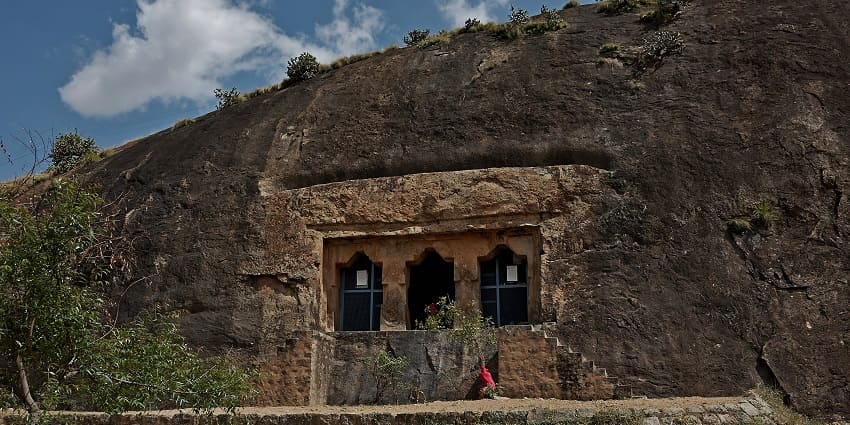
Photo: R.K.Lakshmi / Wikimedia Commons
The Satyagirinathan (Vishnu) temple – situated in Thirumayam which is not far from Pudukkottai, is a wonderful cave temple where the reclining lord surrounded by Garuda, Chitragupta, Markandeya, Bhrahma, and other gods and rishis is a spectacular one. The secondary shrines at the entrances supporting the fort are said to be those of Bhairava, Hanuma, Shakti, Ganapati, and the village deity Karuppu. As a cave temple, the Satyagirinathan temple portrays the impact of the Pallava period in the early designs of cave temples. The temple is an artistic expression and a patronage of religious sentiments.
Timings: 8 AM – 12:30 PM and 4:30 PM – 8 PM
Location: Pudukkotia
Nearest Airport: Trichy Airport
Suggested Read: Government Museum Pudukkottai
6. Sittanavasa Jain Rock Temple
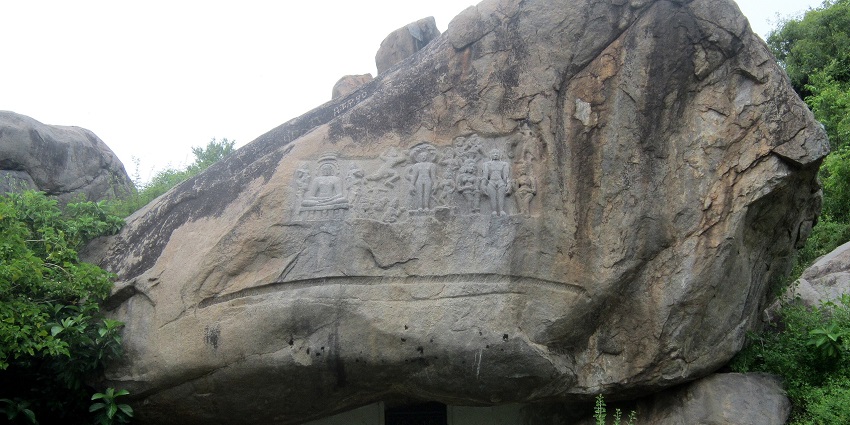
Photo: Tnexplore / Wikimedia Commons
Sittanavasal Jain Cave Temple – one of the prominent cave temples, is similar to the other rock-cut cave temples of the 7th century in overall design and outlook. The temple stands in the Pudukottai District (58 km from Trichy) and is known as Arivar–Koil (the Temple of The Arhats) which contains 9th-century relics. These caves also served as impressive monastic residences in which Jains would deprive themselves of food and shelter and practice the art of fasting. The temples have detailed rockwork, including designs of Jain Tirthankars, mural paintings, and engraving. An important Jain tradition present in Tamil Nadu is found here.
Timings: 10 AM – 6 PM
Location: Pudukkotia
Nearest Airport: Trichy Airport
7. Mahendravadi Cave Temple
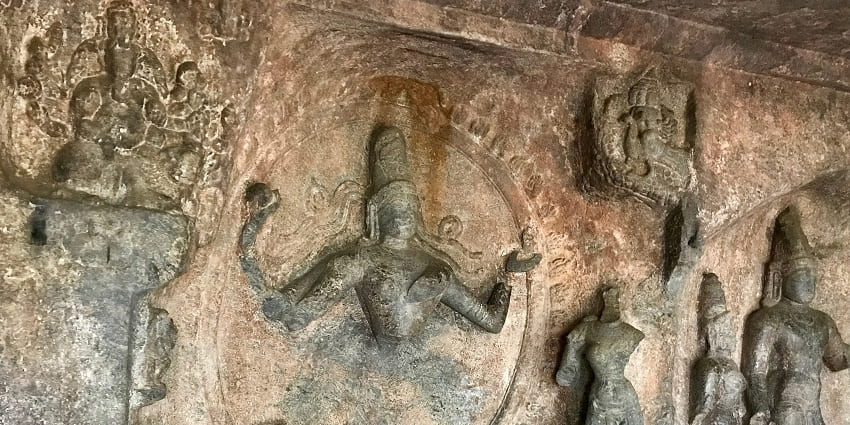
Photo: Ms Sarah Welch / Wikimedia Commons
The Mahendravadi Cave Temple close to Arakkonam in Tamil Nadu is a rock-hewn temple erected by the Pallava King Mahendravarman I in the 7th century. Although cut out of a single stone, the temple is Lord Narasimha oriented with the deity’s face enshrined in the garbhagriha. The temple was excavated by Mahendravarman’s officer Gunabhara, beside a big tank called Mahendra Thataka in the historical region of Mahendrapura. This temple, built over 1700 years ago, is an exquisite example of the early rock-cut architecture of the Pallava dynasty.
Timings: 24*7
Location: Mahendravadi village
Nearest Airport: Chennai International Airport
Suggested Read: Scuba Diving In Pondicherry
8.Thirunandikkara Cave Temple
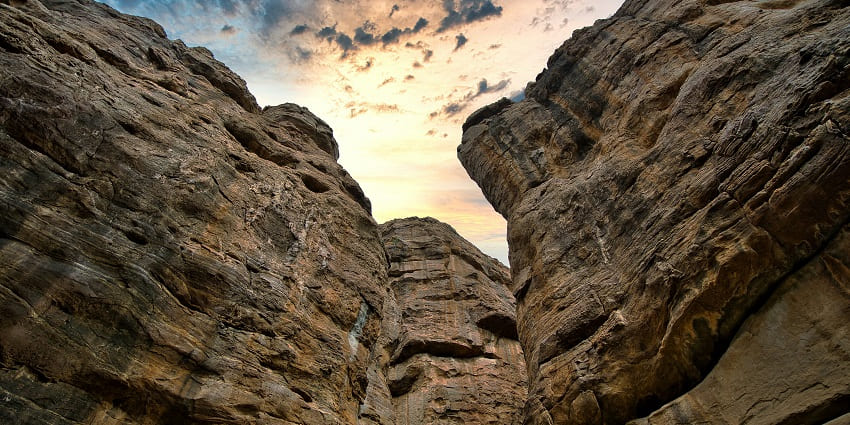
Photo: Gowrisha CV / Pexels / Image For Representation Only
Thirunandikkara Cave Temple is an important heritage site of Pallava art, of the 7th and 8th Decades of CE history located close to Thiruvattar in Kanyakumari District. The temple cut into rock, exemplifies the fusion of Dravidian and Pallava architectural styles as it presents one of the eldest existing murals in the artistic heritage of Kerala. In the temple, the walls’ paintings, though worn out, illustrate parts of Hindu epics and are consistent with the early traditions of mural painting in Kerela, thus making the place of historical and cultural significance.
Timings: 7 AM – 6 PM
Location: Thirunanthikarai
Nearest Airport: Kanyakumari Airport
9. Shervayoyan Cave Temple
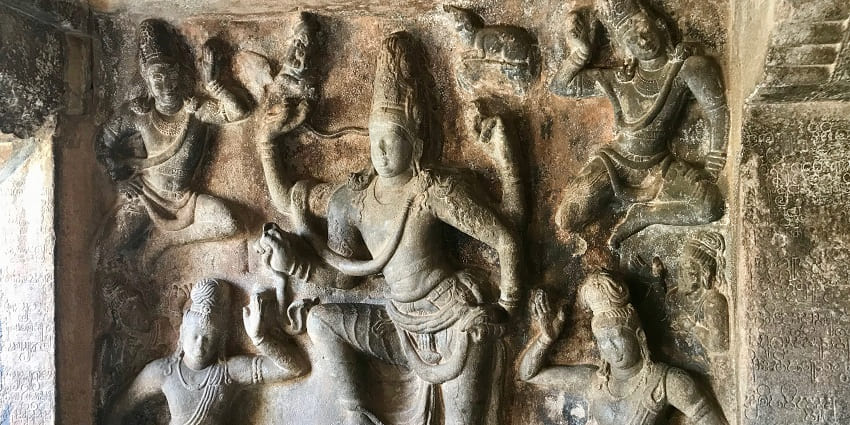
Photo: Ms Sarah Welch / Wikimedia Commons
The Shervaroyan Cave Temple is at, a height, of 5326 feet above sea level, making it the highest point in the area. The temple is dedicated to Lord Shervaroyan and his wife Goddess Cauvery represented by the Shervaroy Hills and the Cauvery River, respectively. The temple is created within a cave and has, great cultural value in the tribal communities of the area, where an annual ceremony is hosted. The temple is set in a beautiful area providing amazing sights of the hills and the valleys around making the place attractive to the pilgrims and the tourists.
Timings: 6 AM – 6 PM
Location: Shervayo Hills, Yercaud
Nearest Airport: Salem Airport
Suggested Read: Prominent Water Sports In Rameshwaram For An Unforgettable Time
10. Kunnandarkoil Cave Temple
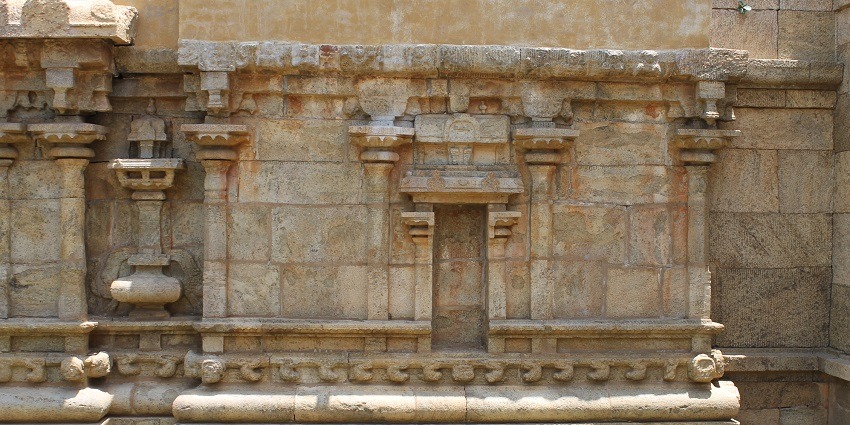
Photo: Thamizhpparithi Maari / Wikimedia Commons
This temple is considered to be an early 8th-century example of Pallava architecture. The temple is imbibed with rock-cut sculptures and architecture depicting Lord Shiva as the main deity and fashioned on a hill. The garbhagriha has a Shiva lingam, and in addition to this, the temple has several other exquisite images of gods such as Vishnu and Shiva along with some other mythological figures. The temple is famous for its rock-cut pillars and sculptured figures holding the architectural capabilities of the Pallava kings. This cave temple is an unacknowledged asset, exhibiting the artistic and spiritual values of Tamil Nadu.
Entry Fee: NIL
Location: Pudukkotia
Nearest Airport: Trichy Airport
The cave temples in Tamil Nadu illustrate a remarkable synthesis of spirituality, artistic endeavors, and architectural creativity dating back to the time of the Pallava, Pandya, and Chola periods. That is why even today, there are many pilgrims and tourists, along with scholars who want to explore these cave temples of Tamil Nadu. Plan your next trip with TripXL for a fascinating exploration of ancient rock temples in Tamil Nadu.
Cover Photo: Abhimanyu Shivkumar / Unsplash / Image For Representation Only


 WhatsApp
WhatsApp
 Twitter
Twitter









